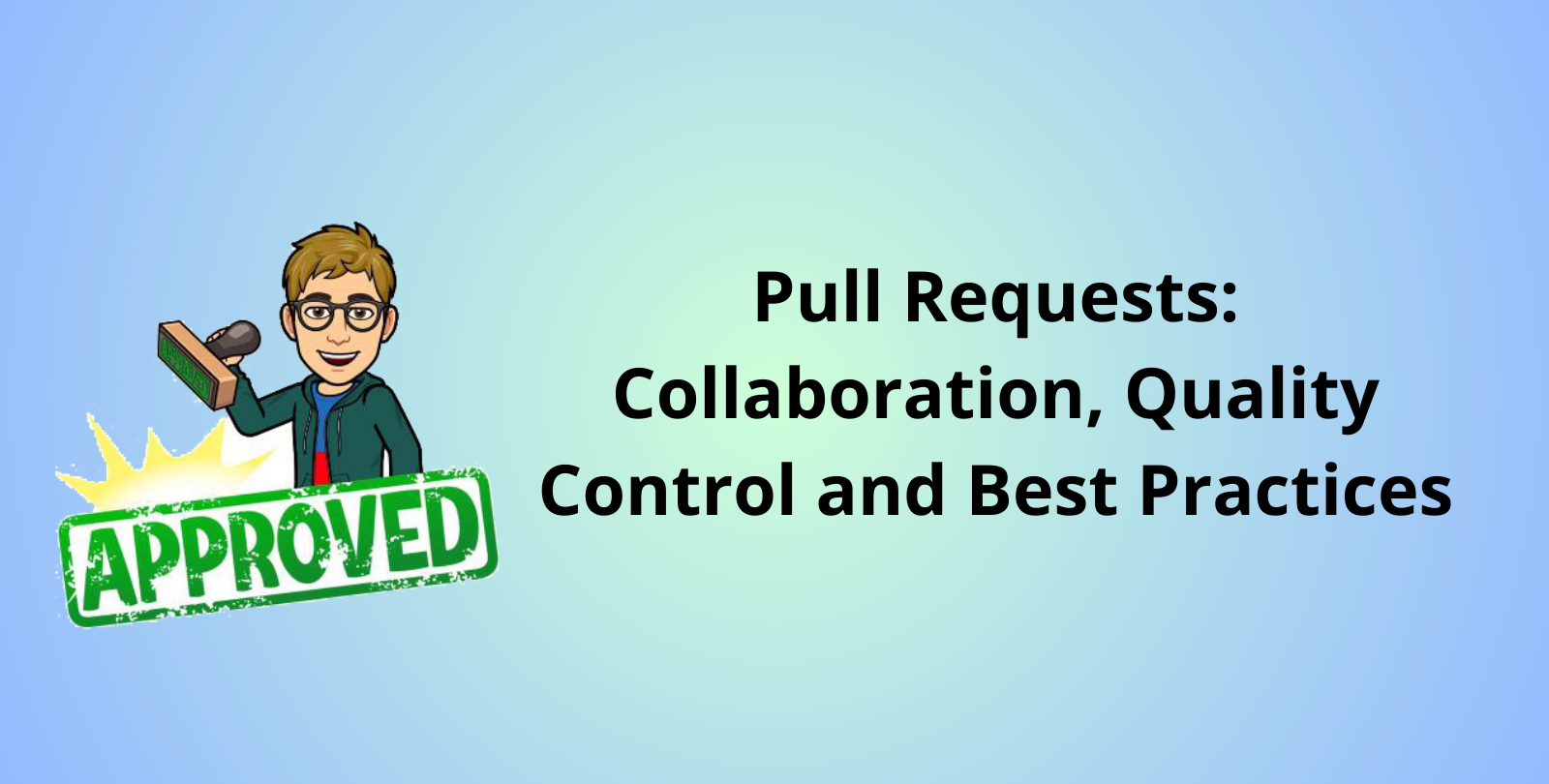Enhancing Team Collaboration and Code Quality through Effective Pull Requests
 Developer Fabio
Developer Fabio
Pull requests (PRs) are a cornerstone of collaborative software development, providing a structured mechanism for team members to review, discuss, and improve code. By using PRs, developers can share their changes with the team, initiate in-depth discussions, and receive valuable feedback
This collaborative process not only enhances the quality of the code but also fosters a culture of continuous learning and knowledge sharing within the team.
Collaboration and Knowledge Sharing
Pull requests (PRs) are a powerful collaboration tool that allows team members to work together effectively. Through PR, developers can share their changes with the rest of the team, initiate discussions, and receive constructive feedback.
This process not only improves the code itself, but also fosters a culture of knowledge sharing
Facilitating Collaboration: PR creates an environment where team members can review each other's work, identify problems or suggest improvements. This cross-review helps maintain consistency in the code and align everyone towards the same project goals
Educational Tool: PR offers a unique opportunity to teach and learn coding best practices. More experienced reviewers can guide less experienced members, highlighting common errors and proposing better solutions. This continuous process of collective learning helps raise the level of competence of the entire team
Quality Control: PR is essential for controlling the quality of code within a software project. Before a change is integrated into the main branch, it must be carefully reviewed by other team members. This ensures that the code is robust, bug-free and compliant with project standards.
Documentation and Tracking Decision: Each pull request represents a living piece of documentation within a project. PR provides a detailed trail of all changes made to the code, including the reasons behind each decision, discussions held, and approvals received.
Best Practices for Pull Requests
Atomicity of Changes
It's important to keep pull requests small and focused on a single change or feature. This makes the review process easier and faster, reducing the likelihood of introducing bugs.
Clear and Concise Commits: Ensure each commit within a PR is focused and meaningful. Avoid large, monolithic commits that mix unrelated changes.
For example, instead of a commit message like "Update code", use something more descriptive like "Refactor user authentication logic for clarity".
Clear Descriptions
Writing clear and detailed descriptions for each PR is crucial for effective collaboration. A well-written description helps reviewers understand the context, purpose, and scope of the changes.
Good Example: "This PR adds input validation to the user registration form to prevent SQL injection vulnerabilities. Includes unit tests for all new validation rules."
Bad Example: "Fixed some bugs."
Automation and CI/CD
Integrate automated testing into your pull request process to catch issues early. Configure Continuous Integration (CI) pipelines to run unit, integration, and other relevant tests automatically when a PR is opened.
- CI/CD Integration: Ensure that only code passing all tests is merged into the main branch. This helps maintain the stability and reliability of the project.
Consistent Code and Style
Consistency in coding style is essential for maintaining readability and reducing technical debt. Use tools like linters and code formatters to enforce style rules automatically.
Linters and Formatters: Implement tools like ESLint, Prettier, or Stylelint to catch style issues before they reach the PR stage. This minimizes nitpicking during reviews and allows reviewers to focus on more significant concerns.
Handling Style Conflicts: If style conflicts arise during review, prioritize using the agreed-upon style guide and the tools configured for the project. Consistency is more important than personal preference in style matters.
Common Challenges
Managing Merge Conflicts:
Merge conflicts can arise when changes in a pull request conflict with changes in the main branch. Resolving these conflicts can be challenging, especially in large projects or when multiple developers are involved.
Example Conflict:
Suppose two developers are working on separate features that modify the same file. When their pull requests are merged, conflicts may occur if both changes affect the same section of the code.
How to Address Them:
Identification and Resolution:
- Use merge tools integrated into IDEs (e.g., VSCode, IntelliJ) to identify and resolve conflicts. These tools highlight differences and allow you to choose which version to keep or how to combine changes
Testing and Verification:
- After resolving conflicts, thoroughly test the code to ensure that the merge did not introduce new bugs or issues
Tips for Avoiding Frequent Conflicts:
Frequent Pull and Push:
- Regularly update your branch with the latest changes from the main branch to minimize the chance of accumulating conflicts
Strategic Branching:
- Create focused and targeted branches for each change. Avoid working on large-scale changes simultaneously to reduce merge complexity
Communication and Coordination:
- Coordinate with the team to avoid simultaneous modifications of critical code sections. Timely communication about which branches are being worked on helps minimize conflicts
Managing Prolonged Discussions:
Prolonged discussions can occur when there are differing opinions on the changes proposed in a pull request. This can lead to delays in the review process and frustration among team members
Techniques for Managing Discussions:
Clarity and Objectivity:
- Keep discussions focused on technical issues and facts rather than personal opinions. Provide data-driven arguments and refer to project standards to resolve disagreements
Involving a Mediator:
- If discussions drag on, it may be helpful to involve a mediator or senior developer to help resolve disagreements and make a final decision
Techniques for Reaching Consensus:
Constructive Dialogue:
- Promote a respectful and constructive dialogue by listening to different viewpoints and seeking compromises. Use concrete examples and evidence to support arguments
Decision-Based on Standards:
- Refer to coding standards and project guidelines to make decisions. This ensures that choices are based on objective criteria rather than personal preferences
Deciding When to Close a PR:
Issue Resolution:
- Close a pull request when all raised issues have been addressed and discussions have stabilized. If a PR cannot reach consensus, it may be necessary to revise it or close it temporarily
Closing and Documentation:
- Document the reasons for closing a PR if it is rejected or postponed. Provide clear and detailed feedback to guide any future revisions
Conclusion
Pull requests are more than just a tool for integrating code; they are essential for fostering collaboration, maintaining high code quality, and documenting the evolution of a project.
By adhering to best practices—such as keeping changes atomic, writing clear descriptions, and integrating automation—you can streamline the review process and minimize common challenges like merge conflicts and lengthy discussions.
Embracing these practices will lead to a more efficient and cohesive development process, ultimately contributing to the overall success of the project.
Subscribe to my newsletter
Read articles from Developer Fabio directly inside your inbox. Subscribe to the newsletter, and don't miss out.
Written by

Developer Fabio
Developer Fabio
I'm a fullstack developer and my stack is includes .net, angular, reactjs, mondodb and mssql I currently work in a little tourism company, I'm not only a developer but I manage a team and customers. I love learning new things and I like the continuous comparison with other people on ideas.